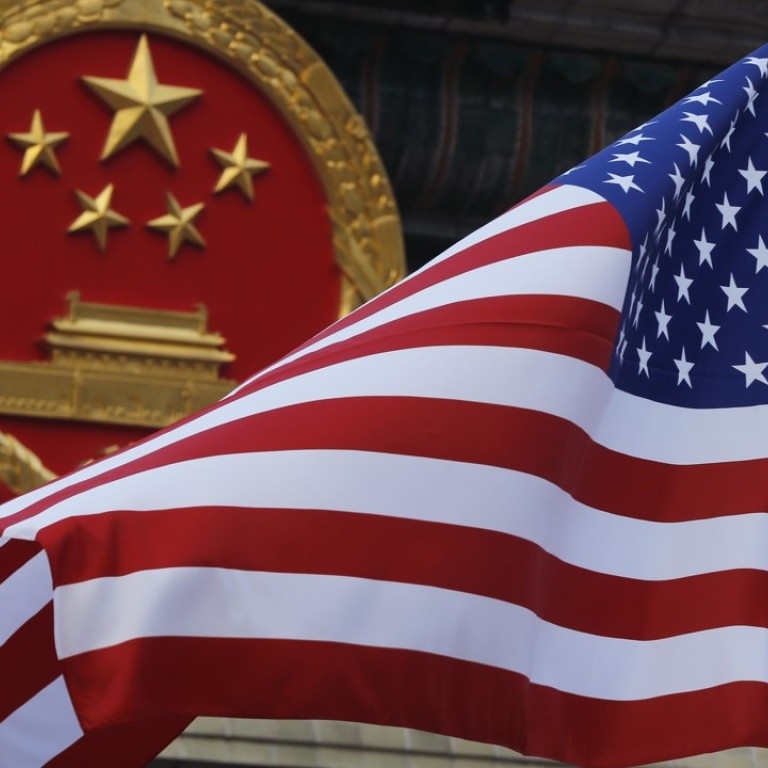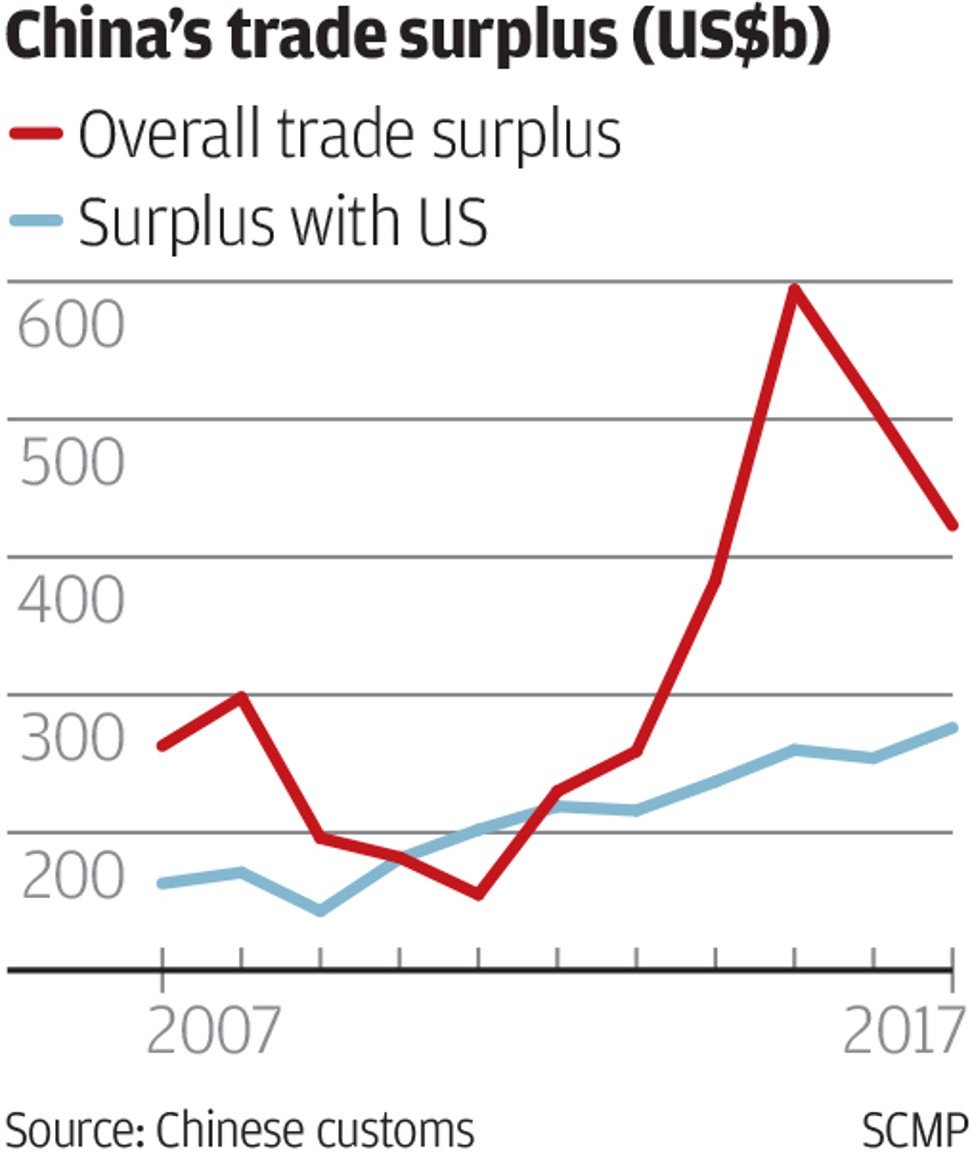
Why China’s record trade surplus with US could be a headache for Beijing
Announcement of US$275 billion surplus comes as Washington talks of taking tougher line on trade and economic dialogue programme is suspended
China’s huge trade surplus with the United States, a priority for President Donald Trump’s administration, hit a record high last year, adding to worries of a worsening rift between the world’s two largest economies.
China’s overall imports for the month missed market expectations, rising just 4.5 per cent year on year, while exports did better than expected, adding 10.9 per cent from a year earlier.

Huang Songping, a spokesman for the customs agency, said China would find it hard to maintain double-digit foreign trade growth this year.
The announcement came at a bad time, as Washington ramps up talk of taking tough economic action against Beijing including punitive tariffs, sanctions and even a trade war, while an important bilateral economic dialogue has hit a major roadblock.
Trump is due to make key decisions soon on whether he will take “strict enforcement actions” against China on solar panels, steel and the alleged theft of intellectual property by Chinese companies, as his hawkish trade advisers have suggested.
Pundits noted that US-China relations have rapidly deteriorated over trade rows since Trump visited Beijing in November, when he boasted of a “very, very great relationship” with his Chinese counterpart Xi Jinping.
Trump described the widening trade deficit with China – which Washington has said is US$100 billion wider than Beijing has reported – as “embarrassing” and “horrible” before his China trip. Tensions eased after concessions were made by the Chinese side during the visit, including pledges to further open up China’s financial markets and signing US$250 billion worth of deals.
But bilateral ties have quickly soured in the past few weeks over mounting trade rifts and North Korea’s nuclear provocations. Trump last month labelled China as a strategic competitor in his first national security strategy and said the US would no longer tolerate economic aggression or unfair trading practices.
Analysts saw this as a sign Washington’s relations with Beijing were shifting from economic interdependence to rivalry, and it came as the Comprehensive Economic Dialogue – which Xi and Trump initiated during their first summit in April – was reportedly suspended.
Daniel Russel, former US assistant secretary of state for East Asian and Pacific Affairs, told the South China Morning Post that “the CED is deep-sixed”.
Although the first dialogue in July failed to produce any tangible results, both sides agreed to maintain communications on major economic policies and conduct constructive cooperation to shrink the trade deficit, according to a joint statement.
While US officials have called on China to take greater steps to address the trade imbalance, Wei Jianguo, a former deputy commerce minister, warned that miscalculations and misjudgment on the part of Washington were more of a concern for Beijing.
“There are various levels of communication channels and dialogue between China and the US,” he said, suggesting that the suspension of the economic dialogue may not affect trade talks.
Noting the Trump administration’s incomplete China policy and personnel, Wei said Beijing had been actively seeking ways to conduct talks with Washington to ease trade tensions.
“I think the CED will resume this year,” he said.
Michael Pettis, a Peking University professor of finance, warned that the trade environment was going to get much worse.
“What history tells us is that a trade war is terrible for surplus countries. China, Japan and Germany are the countries getting hurt the most by these trade problems,” he said.
Washington has already shown signs it is preparing to take a tougher line on trade. Last summer, it launched an investigation into China’s intellectual property practices under Section 301 of the US Trade Act.
China’s exports rose 7.9 per cent to US$2.26 trillion last year, leading the world once again, while imports climbed 15.9 per cent to US$1.84 trillion, according to customs data.
Gao Feng, a spokesman for China’s Ministry of Commerce, said on Thursday that both countries should manage their differences through dialogue to prevent them from escalating into conflict.
Additional reporting by Wendy Wu and Robert Delaney


